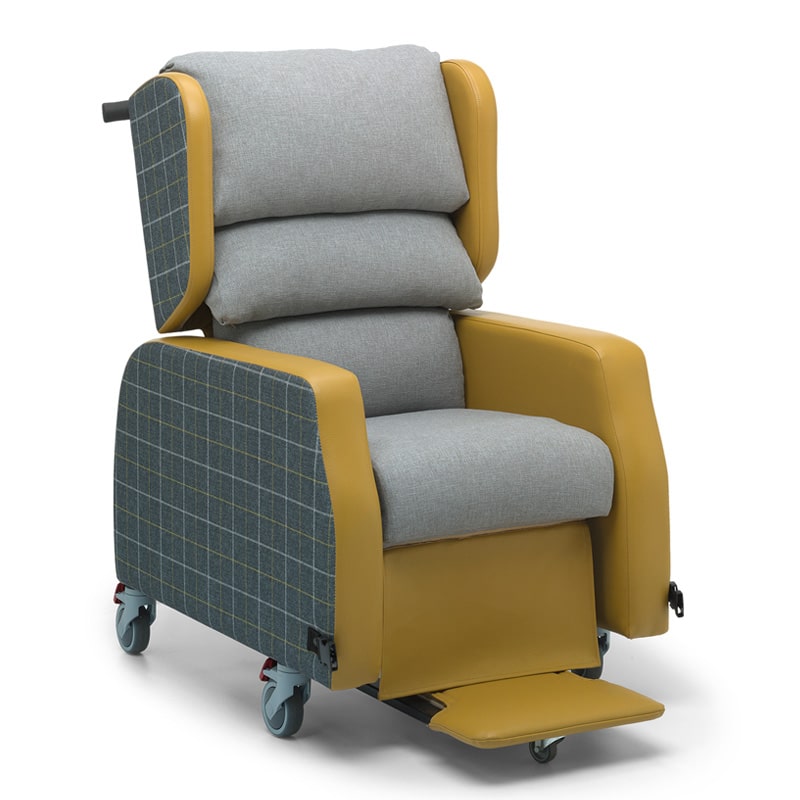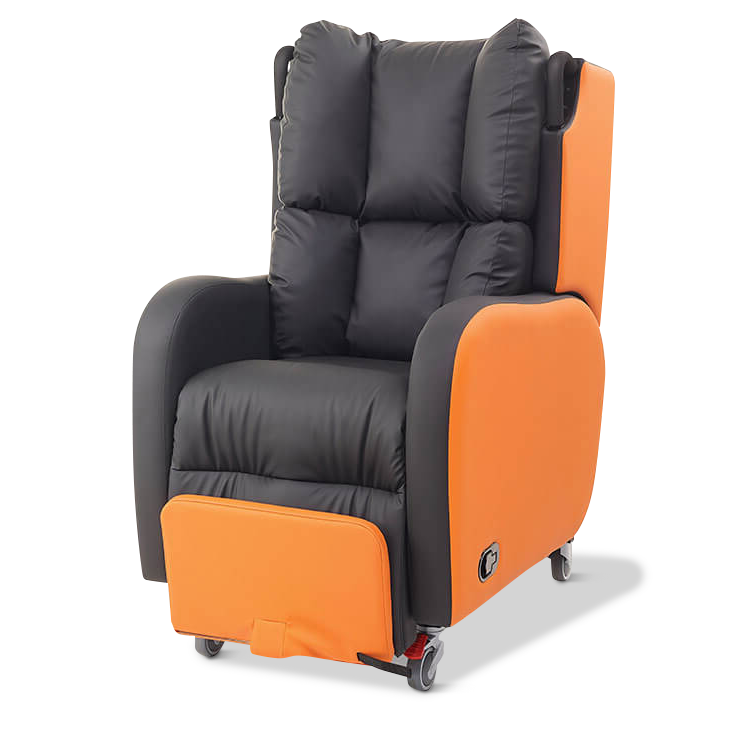Porter Chair Benefits
From a clinical perspective there are several benefits of using a well-designed and manufactured porter chair.
When we think about a porter chair many people have horrible flashbacks to old brown vinyl chairs on wheels often seen in hospitals and care homes. They have traditionally been used in the past to assist the caregiver only, rather than the person sitting in it, but it doesn’t have to be this way.

Moving and handling benefits
If your client requires hoisting to get in and out of their chair, then think about how many moves could be prevented during the day if your client could be moved around whilst sitting in a comfortable, supportive and pressure relieving chair rather than being hoisted every time to a wheelchair for transport reasons.
For some clients, particularly those with cognitive or behavioural difficulties, hoisting can be quite distressful, so by minimising the number of times they are hoisted we can assist in improving their health and well-being.
Postural benefits
The range of chairs that are available and options offered mean that you can ensure your client is sitting in a comfortable and supportive posture whilst in the chair. A porter chair can offer a range postural positions throughout the day, depending on the length of time they’ll be spending in the chair.
There are options such as footplates, leg rests and legs blocks that help to change position of the lower limbs, all allowing adjustments to be made to meet individual needs. Backrests and lateral supports can be altered to achieve optimal seating position. Options as to the type of mechanism are available and these can provide an array of postural positioning to aid pressure management.
Pressure care benefits
When thinking about using a porter chair careful consideration must be given to the pressure care needs of your client. The nature of use for these chairs often means your client will be sitting in them for long periods of time. This has an impact on their pressure care needs and careful consideration needs to be given to this. A range of pressure redistributing cushions can be added to most porter chairs, but make sure that this is only one part of your clients pressure care management plan.
But perhaps even more importantly than the clinical benefits, the chair can enable clients to get out of their beds, get out of their room if they’re in a care home setting and do more than just sitting. A porter chair can enable your client to be in the same room as family members or friends, communicating and interacting with them freely. It can also allow them to complete whatever activities are important to them.
NICE guidelines recommend that older people in care homes “have the opportunity to take part in activity…that helps to maintain or improve their health and mental wellbeing”. And that “…if the person wishes, family, friends and carers should be involved in these activities”[1]. This best practice principle can be applied to clients living in their own homes also and if they are spending long periods of time in a chair, the chair should enable them to do this. A well designed porter chair can allow clients a greater sense of choice over the activities they complete and where these are completed. And isn’t this something that we all should have the right to do.

[1] National Institute for Health and Care Excellence (NICE), 2013. Mental Wellbeing of older people in care homes, Quality Standard QS50.